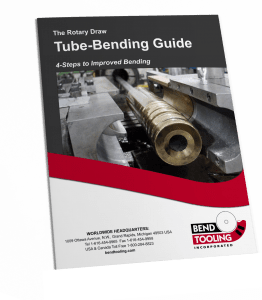Tube bending is a crucial process in various industries, from manufacturing heavy-walled stainless steel pipes for nuclear reactors to crafting delicate precious-metal tubing for jewelry. Among the available bending methods, draw bending stands out as the preferred choice for consistently producing high-quality tube bends. In this blog post, we will explore the unique benefits of draw bending compared to its alternatives, namely ram bending and compression bending.
1. The Draw Bending Advantage:
The draw bending method, often referred to as “mandrel bending,” distinguishes itself by fixing the line of tangency in space through which the material is formed in a flow parallel to the bend form. Unlike compression or ram bending, draw bending allows the practical and effective use of tooling both inside and outside the tube to control material flow as it becomes plastic at the point of bend. Mandrel and wiper tooling, unique to the draw method, play a central role in ensuring the quality of tube bends.
1.1 Mandrel’s Central Importance:
The draw method is closely associated with the use of a mandrel, making it a key element in achieving high-quality bends. The seminar emphasizes the central importance of the mandrel in draw bending, highlighting its role in controlling material flow and preventing defects.
2. Comparisons to Ram Bending and Compression Bending:
To underscore the advantages of draw bending, it is essential to compare it to other common methods, namely ram bending and compression bending.
2.1 Ram Bending:
Ram bending, also known as vertical or press bending, is a simple yet limited method. The ram die pushes a tube through a pair of wing dies, creating two lines of tangency moving in opposite directions. This limitation restricts its applications to heavy-wall tubes with large-radius bends. The complexity and expense of incorporating tooling such as mandrels and wipers to control bend quality make a ram-bending machine less practical and cost-effective than a draw-bending machine.
2.2 Compression Bending:
Compression bending, a direct predecessor of draw bending, uses a bend die, clamp die, and pressure die. However, the static nature of the bend and clamp dies, combined with the rotating pressure die, results in a continuously moving line of tangency. This characteristic makes it challenging to improve bend quality by incorporating a mandrel. Attempts to use mandrels with a chain of balls often lead to undesirable humps in the tube bend, as the pressure die pushes the material over the balls. The inefficiency of mandrels in compression bending reinforces draw bending’s superiority in achieving optimal tube bend quality.
Conclusion:
In conclusion, draw bending emerges as the superior method for consistently producing high-quality tube bends. The ability to control material flow through the use of mandrel and wiper tooling sets draw bending apart from its alternatives, ram bending and compression bending. While each method has its merits, the draw bending process stands as the practical and effective choice for applications ranging from manufacturing agricultural equipment to automotive exhaust systems,.

